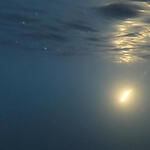Juan Astica
Bio
Nace en Santiago de Chile en 1953. Comienza sus estudios en la capital chilena con Rodolfo Opazo y luego continúa en Buenos Aires en la Escuela de Bellas Artes Manuel Belgrano, la Escuela Superior de Bellas Artes Ernesto de la Cárcova y los talleres de Ceferino Rivero Rodrigo, Aurelio Macchi y Maw Chyuan Wang.
Sus obras se encuentran en numerosas colecciones privadas del país y del extranjero, así como en instituciones tales como el Museo Nacional de Bellas Artes; Art Museum of the Americas, OAS, Washington D.C.; Museo Provincial de Bellas Artes Franklin Rawson, San Juan; Museo Eduardo Sívori, Museo de Arte Contemporáneo Raúl Lozza, Alberti, provincia de Buenos Aires; Banco Central de la República Argentina, Banco de la Nación Argentina, Fondo Nacional de las Artes, Universidad Argentina de la Empresa (UADE), Fundación Amalia Lacroze de Fortabat, Citibank, Deutsche Bank y la Legislatura de la Ciudad de Buenos Aires.
Ha obtenido importantes premios; entre otros, los del Banco Central, el Banco Nación y el Salón Municipal de Artes Plásticas Manuel Belgrano; en 2006, el Gran Premio UADE de Pintura, y en 2016, el Primer Premio del Salón Nacional de Pintura.
Es titular de cátedra en Oficios y Técnicas de las Artes Visuales, Pintura, Universidad Nacional de las Artes.
Vive y trabaja en Buenos Aires.
Juan Astica was born in Santiago de Chile, Chile, in 1953. He began his studies in the Chilean capital with Rodolfo Opazo and, then, moved to Buenos Aires to continue at the Manuel Belgrano School of Fine Arts, the Ernesto de la Cárcova Superior School of Fine Arts, and the workshops of Ceferino Rivero Rodrigo, Aurelio Macchi, and Maw Chyuan Wang.
His works are in numerous private collections in the country and abroad, as well as in different institutions, such as the National Museum of Fine Arts in Argentina; the Art Museum of the Americas, OAS, Washington D.C.; the Franklin Rawson Provincial Museum of Fine Arts in the province of San Juan, Argentina; the Eduardo Sívori Museum; the Raúl Lozza Museum of Contemporary Art, in the town of Alberti, Buenos Aires, Argentina; the Central Bank of Argentina; the Nación Bank, Argentina; the National Arts Fund; the Argentine University of Enterprise (UADE); the Amalia Lacroze de Fortabat Foundation; Citibank; Deutsche Bank, and the Buenos Aires City Legislature.
He has received important awards, including the Central Bank award; the Nación Bank award; the Municipal Salon of Plastic Arts "Manuel Belgrano" award; in 2006, the UADE Grand Prize for Painting; and, in 2016, the First Prize of the National Salon of Painting.
He is Tenured Professor at the National University of Arts, teaching “Crafts and Technique in Visual Arts. Painting.”
He lives and works in Buenos Aires.
Statement
Si busco un nombre para el resultado de lo que hago, en cuanto a imagen se refiere, diría que se trata de una suerte de abstracción orgánica.
Pero como concibo a la imagen, como una ventana hacia lo desconocido, como un posible contacto con lo maravilloso, como un punto de partida para nuevas reconstrucciones u destrucciones, todo el énfasis y la atención está puesto en los procedimientos de trabajo.
Como bien decía Cy Twombly, “la pintura es como un sistema nervioso. No es una descripción, sino algo que está sucediendo”
Como metodología central, he desarrollado verdaderos programas de trabajo en forma de series, para a través de ellas, estudiar la compleja conjunción de factores que conducen al llamado “hecho pictórico”.
El eje principal de esta práctica, se asienta en la atención respecto de la relación entre los materiales, la dinámica de la inteligencia corporal, y la idea. El color y su materialidad, por un lado y las dinámicas del movimiento cuerpo-materia a través de una superficie plana, el otro.
El trayecto, plagado de espejismos, es el espacio-tiempo para tomar permanentemente decisiones entre dudas y contradicciones.
El resultado es por lo tanto un punto de llegada y de partida a la vez. Es solo el hecho consumado de una imposible intención.
I am looking for a name for the result of what I do, as far as image is concerned, I would say that it is a kind of organic abstraction.
But how I conceive the image, as a window towards the unknown, as a possible contact with the wonderful, as a starting point for new reconstructions or destructions, all emphasis and attention is placed on work procedures.
As Cy Twombly said, “painting is like a nervous system. It is not a description, but something that is happening"
As a central methodology, I have developed true work programs in the form of series, to, through them, study the complex conjunction of factors that lead to the so-called “pictorial fact.”
The main axis of this practice is based on attention to the relationship between the materials, the dynamics of bodily intelligence, and the idea. Color and its materiality, on the one hand and the dynamics of body-matter movement across a flat surface, the other.
The journey, full of mirages, is the space-time to permanently make decisions between doubts and contradictions.
The result is therefore a point of arrival and departure at the same time. It's just the fait accompli of an impossible intention.


2.5 x 4m / 98.4 x 157 in














